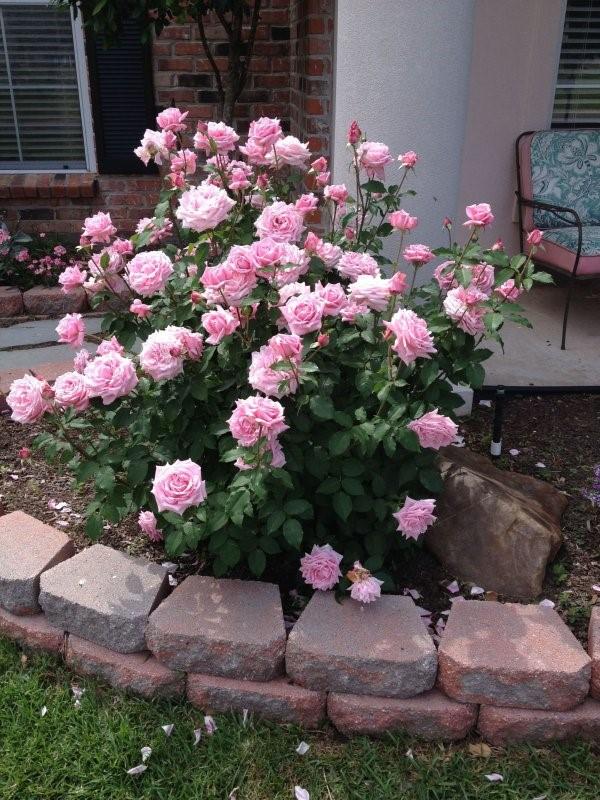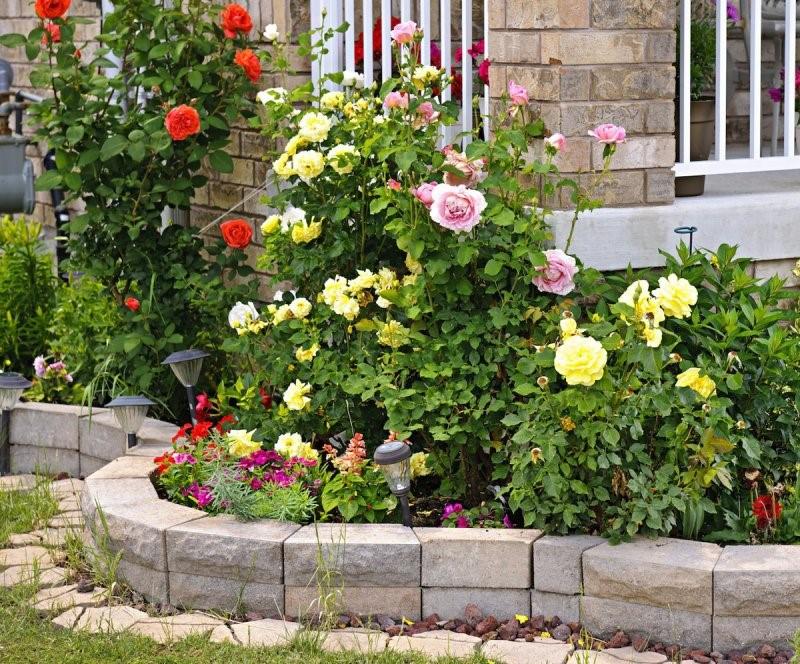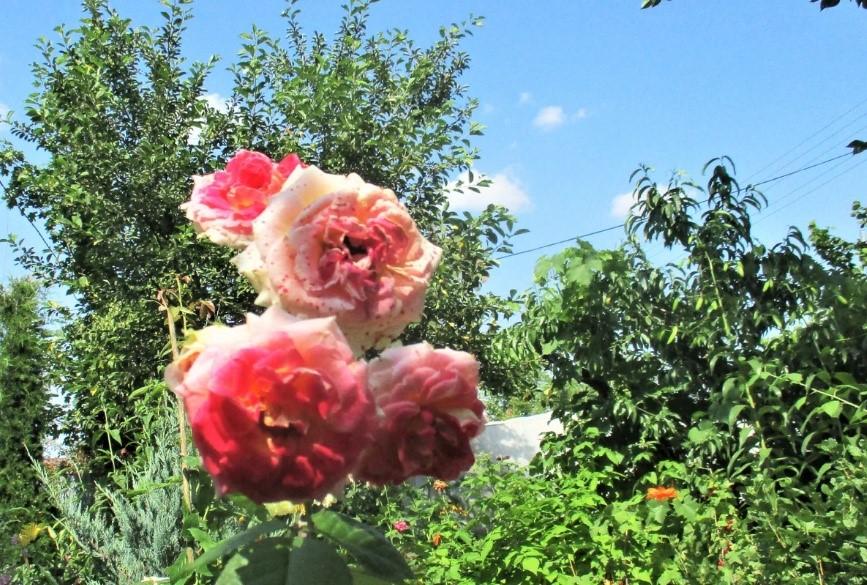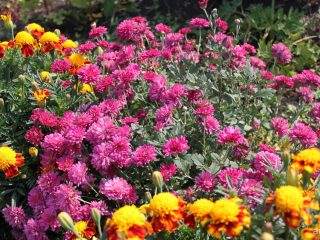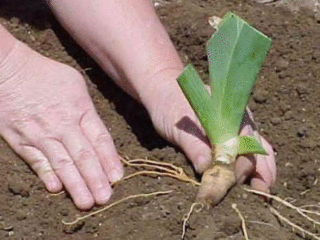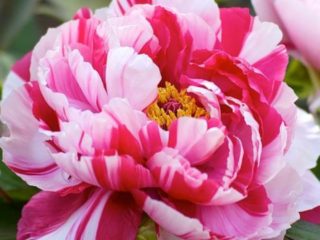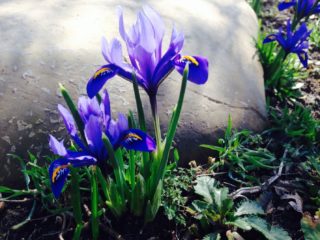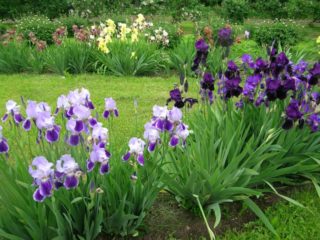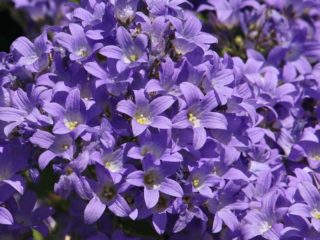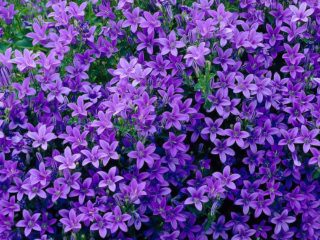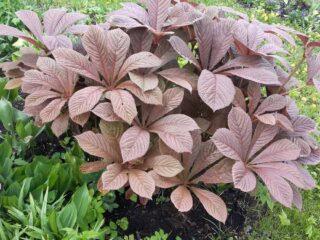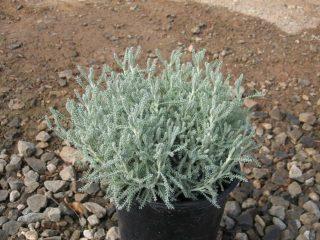Content
Rose Blue Lake is a popular variety of the hybrid tea group. Produces not very tall and compact bushes with large flowers of a soft lilac hue. It is characterized by high winter hardiness and unpretentiousness. However, it requires compliance with certain rules of care, which are described in detail in the presented article.
Breeding history
Blue Lake is a hybrid tea rose obtained in Germany in 1984. The author of the variety is Reimer Cordes, who founded the company of the same name.
During his work, he used two original varieties - Zorina and Blue Moon. The result is a variety whose name means “blue lake.” Although in fact the flower has a rich pink color.
Description of Blue Lake rose
Blue Lake rose bush is small in size. It reaches a height of 90-100 cm, a width that grows to 75-80 cm. The plant is compact and does not take up much space. The leaves shine in the sun, the color is rich green.
Blue Lake rose flowers are quite large, 10-11 cm in diameter. The shape is classic spherical. The outer petals diverge slightly to the sides, the inner ones fit tightly to each other.The type of flower is densely double: numerous petals are arranged in several rows.
The color is pale lavender, more saturated at the edges, magenta. Before blooming, the Blue Lake rose bud has a pronounced crimson hue, then becomes lighter, with a slight silver-blue color.
A characteristic feature is the change in the shape of the inflorescence at different stages of growth. Initially, the rose produces a conical bud, then it gradually opens and becomes spherical. As a rule, flowers are formed one at a time on the shoot. Although there are also brushes of several inflorescences - from 2 to 5.
The Blue Lake rose blooms in June and ends in September, often continuing until the first frost. It usually comes in two waves, so the variety is classified as re-blooming. The aroma is very strong and attractive. This feature is characteristic of all modern varieties of bluish roses.

Some flowers have a single color
The Blue Lake variety has many advantages, and one of them is its high winter hardiness. According to this indicator, the rose corresponds to zone 5, i.e. it tolerates frosts down to -29 degrees. Thanks to this, the bush can winter in open ground with minimal shelter in different regions of Russia:
- middle lane;
- Leningrad region and neighboring territories of the north-west;
- Volga region;
- Chernozem region;
- southern regions;
- Vladivostok.
Advantages and disadvantages
The Blue Lake rose variety is valued by many gardeners - both professionals and amateurs. Roses have attractive colors and give an excellent aroma.They look good not only in the flowerbed, but also as a cut flower.
Pros:
- very beautiful, large flower;
- rich aroma;
- re-blooming;
- high winter hardiness;
- can be used in bouquets;
- easy cutting procedure.
Minuses:
- color may differ from declared;
- the flowers only bloom for a few days.
Planting and care
Before planting Blue Lake roses, you should carefully select a location. To do this, pay attention to several indicators at once:
- good illumination (partial shade is also allowed);
- protection from draft winds, especially from the north side, is a very important requirement, compliance with which will protect the Blue Lake bush from frost;
- fertile soil - loam with loose soil is optimal, the reaction is neutral or slightly acidic pH = 6-7;
- absence of stagnant water (lowlands should not be considered, since puddles form here after rain or snowmelt).
When choosing the timing of planting Blue Lake roses, it is best to focus on spring. But there is no need to rush - it is better to wait until the soil warms up to at least +10 degrees (bury a thermometer and measure the temperature). In most regions, planting begins at the end of April - the first half of May.
As a last resort, you can plant in early June, but not in July. In the southern regions, autumn planting is allowed. In this case, you should be in time before the first frosts at the end of October.
It is advisable to prepare the area before planting the Blue Lake rose. To do this, dig up the soil and cover it with compost or humus in an amount of 5-7 kg per square meter. The landing process itself looks like this:
- Several holes 40 cm deep are formed with an interval of at least 50 cm.
- Fill in a layer of small stones.
- Lay fertile soil.
- Spread the roots of Blue Lake rose seedlings and bury them.
- Tamp down a little so that the root collar goes to a depth of 5-7 cm.
- Then water with settled water and mulch after a few days.
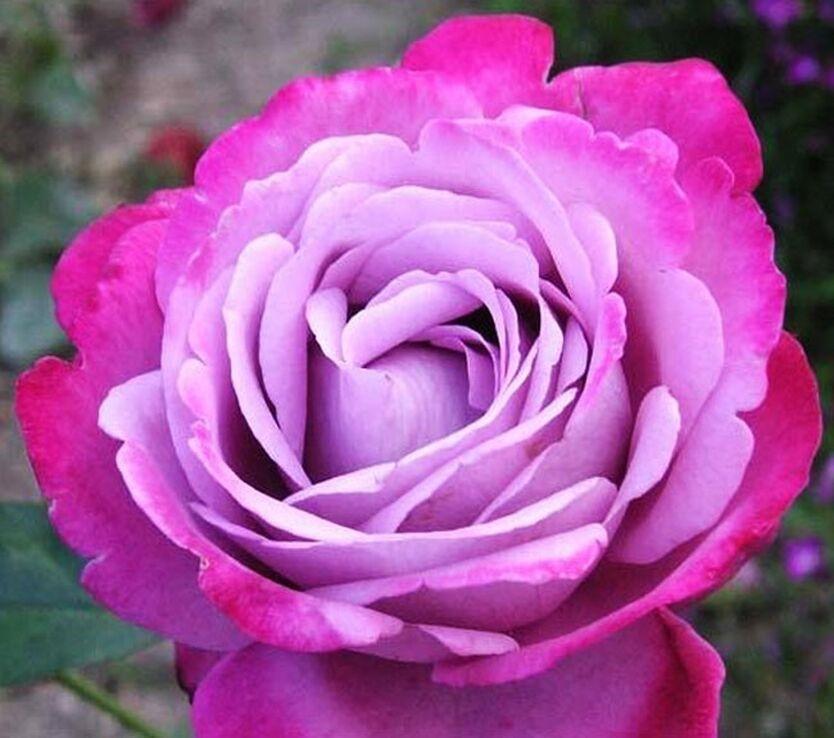
This variety of rose grows best in open sunny flower beds.
Rose Blue Lake needs good care. On the one hand, she is not too whimsical, but on the other hand, she gives flowers only if several rules are observed:
- Water should be given regularly, at least twice a week. Moreover, the soil must have time to dry out - this is especially important to take into account during the rainy season.
- Blue Lake roses should be fed regularly. For the first time in April, urea or ammonium nitrate is given (15-20 g per 10 l). During the formation of buds, they are fed with superphosphate (40 g per 10 l) and potassium sulfate (30 g per 10 l). Moreover, they can be replaced with complex fertilizer, giving it every three weeks until the beginning of August.
- Periodically loosen the soil and remove weeds. It is especially important to do this after heavy rains or heavy watering. To prevent the surface soil from drying out quickly in the heat, it is recommended to mulch the roots with straw, peat or other natural materials.
- Special attention should be paid to the winter shelter of the Blue Lake rose. If the winter temperature in the region does not drop below -20, you can simply mulch the roots. But in other areas, especially in the Urals and Siberia, winter shelter is required. At the end of autumn, it is necessary to hill up and stretch agrofibre or burlap onto a pre-installed frame.
- The Blue Lake rose bush is not very spreading, but the shoots often produce several fairly large flowers. Therefore, it is worth installing supports in the form of wooden pegs. Especially heavy branches are tied with a rope.
Reproduction methods
Blue Lake rose is most often propagated by cuttings. The procedure begins in early June. The main stages are:
- Cut the green shoots and remove the thin apical part.
- Then cut into several parts, make an oblique lower cut and a straight upper cut.
- Place it overnight in a solution of Epin or another growth stimulant.
- Then they are planted in a fertile mixture of peat and sand in a 1:1 ratio, watered abundantly and covered with a jar.
- Periodically remove the shelter for ventilation and regularly moisten it.
- In early September, the Blue Lake rose seedling is transferred to a permanent place and carefully covered for the winter.
Diseases and pests
With normal care, the Blue Lake rose practically does not get sick. However, if watering rules are violated or there is insufficient shelter for the winter, the bushes may suffer from fungal and other infections:
- powdery mildew;
- rust;
- necrosis of the cortex;
- gray and various types of root rot.
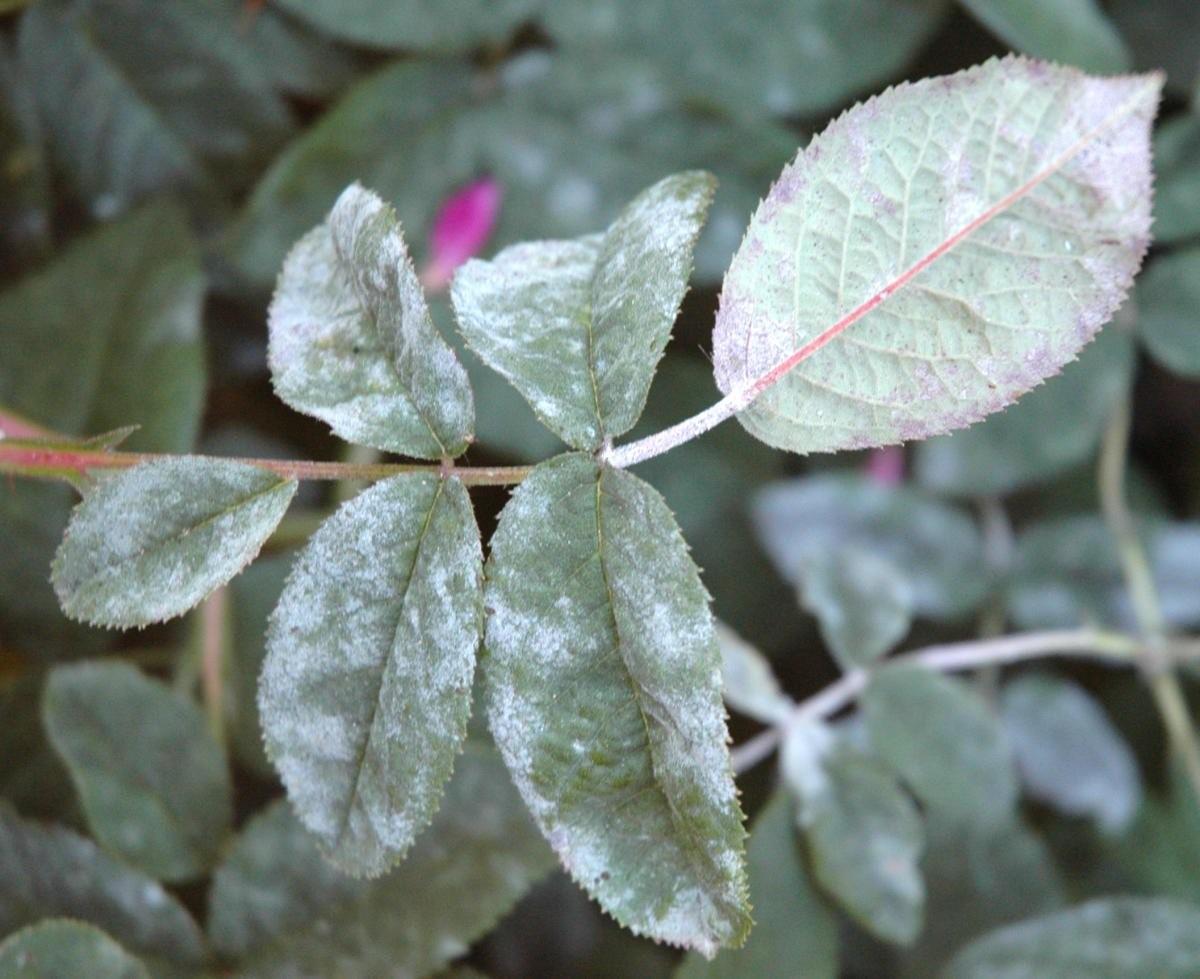
Signs of rose powdery mildew
For prevention, it is recommended to treat each spring with fungicides, for example, Bordeaux mixture or special preparations - “HOM”, “Ordan”, “Ridomil Gold” and others. It is also necessary to do sanitary pruning, removing diseased, old branches, and shoots damaged by winter frosts.
Among the pests that pose a particular danger to Blue Lake are:
- thrips;
- earwigs;
- rose aphid, borer;
- spider mites;
- leaf beetles.
If an invasion has begun, it is recommended to spray 1-2 insecticides. For this, different drugs are used, for example, “Karbofos”, “Inta-Vir”, “Fufanon” and others.
Application in landscape design
Blue Lake Rose is a rather spectacular flower that looks beautiful on its own. But the bushes can be planted together with other plants.Several options for using the variety in landscape design are shown below:
- Flowerbed next to the house.
- Composition with other varieties of roses.
- Single landing.
Conclusion
Rose Blue Lake is one of the best varieties of lilac color. The buds open briefly, but quite a lot of them appear on each bush. The petals smell nice and spread out a little when the bud opens. The variety is attractive both in appearance and winter hardiness. You can grow shrubs in almost any region, including Siberia.

